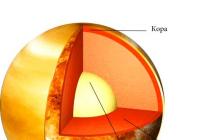It's no secret that any device that runs on electrical energy generates heat, whether it's a phone, TV or PC. In modern personal computers, some components heat up to very high temperatures, sometimes even above the boiling point of water.
Obviously, the higher the temperature at which the device operates, the shorter its service life, since it is necessary to withstand additional loads during overheating.
Cooling systems and overheating
Modern computers are equipped with cooling systems, the main task of which is to remove excess heat from the PC components.
A wide variety of cooling systems (CO) are used. Forced-ventilated air systems, consisting of radiators and fans, are widely used. Liquid and freon installations are also used. Overclockers (overclocking enthusiasts) - when overclocking processors, even open evaporation is used to obtain low temperatures.
Despite the presence of such systems, very often the motherboard and hardware components of a PC, whether it is a desktop computer or a laptop, operate at very high temperatures. The CPU is especially susceptible to this. This can happen for several reasons:
- Failure of the cooling system. Fan failure, loss of properties of heat-conducting paste (thermal paste) from long-term operation, and so on.
- The accumulation of household dust on the elements of the cooling system prevents the passage of hot air and the outflow of heat.
- Long-term work with critical loads.
For safety reasons, the CPU will shut down Windows when PC components overheat. High temperatures very often lead to failure of computer components. Therefore, it is very important to control the temperature regime of operation in order to detect overheating in time and eliminate its causes.
To do this, there are a fairly large number of software tools that display on the screen the temperatures of the computer nodes, the fan speed, the operating voltage of the supply, and much other useful information. In this article, we will look at the most popular of them.
HWMonitor
The tool was developed by the company whose laboratory owns programs such as CPU-Z and PC-Wizard. The product is distinguished by lightness, completeness of displayed information, including temperature, voltage, clock frequency and much more in a very easy-to-read form.

As we can see, the program displays not only the current value for each position, but also the minimum and maximum since the launch.
HWMonitor is constantly updated to support the latest hardware. There are no additional functions, such as adjusting the fan speed, setting warning signals, except for saving the current parameters to a text file, but for a simple display of all relevant values, a better program cannot be found.
IMPORTANT A: HWMonitor uses a minimum of system resources to operate compared to similar programs.
There are both installers for 32 and 64-bit Windows, as well as portable versions for these systems. The utility exists in paid and free versions. The set of functions of the free version is quite enough to control the basic parameters of the computer.
Speedfan
Speedfan is a time-tested utility that has its own army of fans. The program is deservedly considered one of the best tools for monitoring the temperature of almost any PC node, fan speed.

In addition, Speedfan allows you to control the rotation speed of the coolers, increasing it for better cooling or decreasing it to reduce the noise from their operation. Limit values can be set for temperatures, upon reaching which the program will warn the user. In addition, the program reads the SMART data of the hard disk.

The data read by the program can also be displayed graphically:

IMPORTANT: sometimes the program gives out data that can plunge the user into a panic. For example, node temperature over 100°C or cooler rotation speed over 500,000 rpm. Do not be afraid, these figures are not true. It's just that the sensor responsible for these readings is missing.
Open Hardware Monitor
We said above that it is difficult to find a program that more conveniently and more fully displays all the necessary information about the temperature and features of the operation of PC components than HWMonitor. But still, there was a tool that, apparently, surpasses it. This is Open Hardware Monitor. In addition to temperatures, fan speeds, and voltages, it can also display detailed CPU and GPU frequencies, the load they're running under, memory and hard drive information, and more.

If we add to this the ability to provide visually selected data in the form of graphs and a gadget on the desktop, then we will understand all the advantages of this tool.

Each value can also be renamed or hidden, and some data has an Options button to set things like offset and so on. Open Hardware Monitor is a portable program, and in order to access all the features, the program must be run as an administrator.
HWiNFO64
HWiNFO64, unlike previous programs, is a tool for a wider, one might even say, professional, application. It is intended for complete computer diagnostics and obtaining complete information about hardware components. This application is free and can be downloaded from the official website, both as an installation file and as a portable portable version that does not require installation.
At the first start we will see two windows. The first of them is complete information about the following components:
- central processing unit;
- motherboard;
- hard drive;
- random access memory;
- graphics processor;
- operating system;

In this window, we see detailed information about the architecture of the main components of the computer, their characteristics, etc. But this is not the only thing that HWiNFO64 offers us.
The main window shows us information about all the components, and also allows us to access additional features of the application:

Selecting any component on the left, on the right we will get complete technical information about it. In this way, we can find out, for example, the exact model of each component in order to update its drivers. Also in the upper part of the window we will have access to the additional function "Sensors", which will allow us to control the operation of the equipment on the screen.

As we can see, HWiNFO64 is a tool, functional and easy to use, thanks to which we can always get all the information about the hardware of our computer.
Speccy
Speccy is a free Windows monitoring tool developed by Piriform, the makers of well-known applications such as Recuva, and Defraggler.
The program provides detailed information about your processor (name, family, cache, frequency of each core, etc.), RAM in each slot (manufacturer, type, size, frequency, and even production date, batch number), motherboard, graphics and sound card, monitor, hard drive, optical drive and installed operating system.

For example, in the information about graphics devices, we can get information about the installed video card driver. By going to the manufacturer's website and checking for new driver versions, we can decide whether to update them.

There is a paid version of Speccy Professional with more advanced features that can be purchased from the manufacturer's website.
AIDA64
This product is paid with a 30-day trial. The tool provides ample opportunities for monitoring and maintaining your personal computer. With it, you can view detailed information about all computer components, such as the operating system, motherboard, multimedia, network, perform various tests regarding system stability, memory, processor, etc.
The program can be downloaded from the official AIDA website. Available in four different editions: Extreme, Engineer, Network Audit and Business.
The Extreme version contains all the features that are necessary for ordinary users, so we chose it to get acquainted with the main features of the tool. In addition, it does not require a business license and has a very reasonable price ($39.95).
The main interface of the program is very simple and extremely easy to use. It consists of a menu bar (which includes six buttons: File, View, Report, Favorites, Tools, and Help) and a Tool and Command Bar.

The main window is divided into two parts. On the left side are the main categories - computer, motherboard, operating system, etc., and on the right side, you can view the full details of each component of the computer.

AIDA64 Extreme is a powerful program for diagnosing and testing personal computers. The product offers a wide range of tools for monitoring and managing all computer components. The user is offered a wide range of different tests for CPU, GPU, RAM, HDD and SSD.
AIDA64 Extreme contains more than 150 tools that allow you to control temperature, voltage, fan speed, etc. With the help of the program, you can get detailed information about the hardware (processor, motherboard, video card, etc.) and software (operating system, drivers, etc.).
A personal computer is a complex and expensive technique that needs timely and high-quality maintenance. Dust, prolonged operation without cleaning the cooling system and replacing thermal paste leads to the fact that computer components operate in adverse conditions at temperatures that are much higher than the permissible values. This leads to rapid wear and failure of the central processor, video card, memory, motherboard and other components.
In this article, we have shown you several software tools that will allow you to always be aware of the status of your PC nodes, which in turn will allow you to make timely decisions about their maintenance. We hope that this information will help you choose the most suitable program for you, and with its help you will significantly extend the life of your computer.
More on the site:
Programs for monitoring the temperature of the processor and video card updated: January 28, 2018 by: admin
One of the factors affecting the speed of a computer / laptop is the temperature of the processor, video card and other components. The higher the temperature, the slower the computer/laptop will run. If the processor is very hot, the video card may fail, and long-term operation in high heat mode reduces its service life. At critical temperatures, the device will spontaneously turn off (protection against overheating). In order to prevent overheating of the processor, video card and other components of a computer / laptop, it is necessary to periodically monitor the temperature and, at critical values, take measures to reduce it. How and how to check the temperatures of the processor, video card and how to reduce the temperature will be described in this article.
There are two ways to check the temperature of the processor, video card and other computer/laptop components:
1 View temperature in BIOS;
2 Use third-party programs.
Find out the temperature of the processor and other components in the BIOS.
In order to get into the BIOS when booting a computer, laptop, press the F2 or Del key (the buttons may differ, depending on the model of the motherboard). Then in the settings you need to find the Power / Monitor menu in different versions of the BIOS will be different. There you will see the temperature of the processor, motherboard, etc..
I will give an example of how I watched the temperature on the ASUS motherboard in UEFI (Unified Extensible Firmware Interface - a replacement for the obsolete BIOS, used in modern motherboards). Once you are in UEFI, click the "Advanced" button.
After that, go to the "Monitor" tab, you will see the temperature of the processor, motherboard and much more information.

Thus, without installing any programs, you can find out the temperatures of the computer / laptop components. The disadvantage of this method is that not all motherboards have this option and it is impossible to see the processor temperature under load (when running "heavy" programs or games).
Find out the temperature of the processor, video card using programs.
There are a large number of different programs that will show you online the temperature values of computer / laptop components. In this article, I will analyze several of these applications and give my assessment of their work.
Find out the temperature of computer / laptop components using the AIDA64 program.
AIDA64 is one of the most popular computer/laptop review and diagnostic software. AIDA64 provides comprehensive information about the composition of the computer: hardware, programs, operating system, network and connected devices, and also shows the temperature of all devices on the computer / laptop.
The window of the program, which shows the temperature data from the sensors.

It should be said that the program is paid and trial version (30 days) does not show information about all devices, in my opinion this is the main disadvantage of this program.
Find out the temperature of the processor, video card using the Speccy program.
Speccy is a small utility from the developers of the most popular application for cleaning your computer of system junk CCleaner. At startup, Speccy monitors the hardware of the computer, and displays information about the operating system, the characteristics of the installed hardware, and data from sensors.
Below the program interface.

In my opinion, one of the best programs for determining the temperature of the processor, video card, etc. In addition to information from sensors, it also provides a detailed analysis of all hardware installed on a computer / laptop. The big plus is that the program is free.
Find out the temperature of the processor, video card using the CPUID HWMonitor program.
CPUID HWMonitor - a program designed to monitor the performance of various components of a computer / laptop (temperature, fan speed, and voltage).
Below is the interface of this program.

In my opinion, the ideal solution for those who are only interested in information about the temperature of all PC components. No unnecessary information, only temperature and fan speed, plus minimum and maximum values are shown, in addition, this program is absolutely free.
What should be the temperature of the processor and video card.
Different processor manufacturers set their own temperature, but generally speaking, the temperature should be between 30 -45 ° C in idle, up to 60-65 ° C in load, anything above is considered critical. Let me explain that these are average values, you need to look for more specific information on the website of your processor manufacturer.
For a video card, the normal temperature is up to 50-55°C at idle, under load up to 75-80°C. These average values can be found on the website of the manufacturer of your video card.
What to do when the temperature of the processor, video card is high.
1 Clean your computer/laptop from dust. Make sure all coolers and vents are free of dust. This is the most common overheating problem in a computer or laptop. To eliminate it, you need to disassemble the computer / laptop and remove all the dust that interferes with cooling.
2 Replace thermal paste. Thermal paste is a layer of thermally conductive compound (usually multi-component) between the processor and the heatsink. Over time, this paste dries up and loses its properties, because of this, the processor and video card overheat. To replace it, you need to disassemble the computer, remove the old thermal paste from the laptop and apply a new one in a THIN layer. Typically, thermal paste is replaced when cleaning a computer / laptop from dust.
3 Replace the radiatorcooler. You should choose a better heatsink, cooler for better cooling of the computer. In addition, it is quite possible that an additional cooler should be installed on the case for better heat dissipation from the computer.
I hope I helped you determine the temperature of the processor, video card and you were able to reduce it and achieve faster and more stable operation of your computer / laptop.
If your laptop just turns off, freezes, or just sometimes slows down in games, then this article is for you. This article describes how to identify if the laptop is overheating, as well as how to deal with overheating.
Introduction
This guide will talk about overheating. In fact, this is one of the most common problems encountered with laptops. Partially, the topic of overheating was raised in the article:. In this article I will try to reveal it more fully.
Let's first consider why the laptop overheats. There may be several reasons for this:
- The cooling system is poorly designed. I think it's no secret to anyone that laptops are all different. Hence, they have different cooling systems. Some have it thought out very well and with a margin, others do not have laptops. As a result, some laptops heat up weakly, while others are stronger;
- A pile of dust and other debris in the cooling system. This happens very often. Dust clogs in front of the radiator from the fan side. In especially neglected cases, the thickness of the layer of dust, wool and other debris reaches 5-10 mm. Naturally, the efficiency of the cooling system in this case tends to zero. Here the laptop overheats;
- Disruption of contact between the surface of the chip and the heat sink plate. This also happens. Since the time of thermal paste, which is located between the chip and the plate hardens. This can lead not only to a deterioration in its properties, but also to the fact that, due to shock or strong vibration, the heat sink plate simply moves away from the layer of hardened thermal paste and an air gap forms. This greatly complicates heat transfer and, as a result, the chip overheats;
- Incorrect operation of the laptop. Many laptops are designed in such a way that air for cooling internal components is sucked in through holes in the bottom and / or from the side of the keyboard. If you put the laptop on a soft surface, the holes on the bottom will overlap. As a result, the laptop will simply overheat. The same applies to working with the lid closed. Some of the holes are blocked, less air enters the cooling system and the laptop overheats.
Let us now consider how overheating usually manifests itself.
Typical symptoms of laptop overheating:
- The laptop turns off by itself;
- The laptop freezes;
- Games experience occasional stutters. More details about them are described in this guide:.
This happens because the overheating protection is activated. The fact is that modern processors, video cards and chipsets have thermal sensors that constantly monitor the temperature. If the temperature exceeds a certain threshold, then the processor and video card lower their frequency and supply voltage. As a result, the temperature and performance drops and the laptop starts to slow down. Also, if the laptop overheats, it may freeze or turn off. When the video card overheats, extra lines, squares, and other defects may appear on the screen. When the processor overheats, the laptop freezes and turns off with a characteristic sound jamming.
It is quite logical that in order to determine whether a laptop is overheating or not, you just need to measure the maximum temperature of the processor, video card and other components. This is what we will do now.
Temperature measurement
The utility is great for measuring laptop temperatures HWMonitor. You can download it from these links: /.

This utility shows the current, minimum and maximum temperatures since startup. We are only interested in the maximum temperature values.
Now we launch a game or other application that heavily loads the laptop. We work or play for 15 minutes and see what the utility shows HWMonitor:

Important note:the HWMonitor utility must be minimized while playing or working with the application. If you run it after you have worked or played, or at the time when you turned off the game, then you will not receive accurate data on the maximum temperature. This is due to the fact that if you remove the load, the processor and video card drop the temperature very quickly.
Now let me explain what is what:
- THRM is the chipset. During the game, he was able to warm up to 74 degrees (right column);
- Core #0 and Core #1 are the processor cores. They warmed up to 71 and 72 degrees;
- GPU Core It's a video card chip. He was able to warm up to 87 degrees;
- HDD- It's a Winchester. He warmed up to 47 degrees.
Note: if you cannot figure out what the HWMonitor utility shows you and how bad it is, then do not be shy and ask in the appropriate forum topic:. To the message necessarily add window image HWMonitor.
What temperatures are normal:
- For the processor, the normal temperature can be considered 75-80 degrees under load. If above 90 - definitely overheating;
- For a video card, the normal temperature is 70-90 degrees;
- For a hard drive, temperatures up to 50-55 are normal. If it is above 60, then it is worth copying important data from the hard drive. There is a risk of losing them;
- For the chipset, the normal temperature is up to 90 degrees.
Important note: maximum temperatures may vary from model to model. For example, for an nVidia GeForce 8600M GT video card, the normal temperature is 90-95 degrees. For nVidia GeForce 9500M GS - 80-85.
If your laptop does not overheat and temperatures are significantly lower than those described above, then the cause of freezes, slowdowns and shutdowns should be looked for in the operating system and drivers. First of all, you need to try updating the BIOS of the laptop. It is available on the website of your laptop manufacturer. If this does not help, then you should reinstall the system, try other drivers, update programs and see the recommendations from the manual:. If this does not help, then you should contact the service center, as the cause of freezes and shutdowns of the laptop may be partial damage to the motherboard (power stabilization circuits and other things). It is very difficult to fix this at home.
If the laptop still overheats, then you need to take measures to cool it.
There are such basic ways to lower the temperature of a laptop:
- Put something under the back end;
- Use a cooling pad;
- Clean the cooling system from dust;
- Thermal paste replacement.
Let's consider each of these methods.
1. Raise the back of the laptop
In most cases, the air that cools the laptop components is sucked in through holes and slots in the bottom of the laptop. Part of the air is also sucked in from the keyboard side. Raising the back end of the laptop, we increase the gap between the bottom and the table. As a result, air circulation improves. In other words, the air that is driven through the radiator of the cooling system becomes colder. Also, by reducing the resistance of this air, more is sucked in. As a result, the maximum temperature can drop by 5-10 degrees.
Under the back end, you can put anything you like, from books to stationery rubber bands. This is how it looks like:

There is nothing complicated. Everything is simple and clear.
2. Using a cooling pad
This method is also quite simple and effective. The bottom line is that the laptop is placed on a stand with fans. These fans force air onto the bottom of the laptop. Air enters through the slots and holes in the bottom. As a result, air flow increases, which blows over the internal components of the laptop and the heatsink. In practice, the temperature drops by 5-15 degrees.
This is what the cooling pads look like:

They cost basically from 20-30 to 50-60$. You can also do this yourself. The stands are usually powered from the USB port of the laptop.
3. Cleaning the laptop cooling system from dust
Cleaning the cooling system from dust makes sense if 2-3 months have passed since the purchase. This period depends on the operating conditions of the laptop. After cleaning, the laptop will warm up in the same way as after purchase.
This is a service operation and is often not covered under warranty. If possible, entrust this operation to a service center. For a small fee, they will clean everything for you.
If you do not want to give the laptop to a service center, then you can completely clean it yourself. To do this, you need to partially disassemble the laptop. Vacuuming often does not give a serious effect.
So. Let's start. First you need to turn off the laptop, unplug it and turn it over:

Before disassembling the laptop, it is worth pulling out the battery. This must be done!. When the battery is pulled out, it is worth analyzing how to get to the fan. On the Acer Aspire 5920, for example, you need to remove the large bottom cover to do this. It rests on these bolts:

When all the bolts that hold the cover are unscrewed, we begin to remove it a little bit:

Important note: often, in addition to bolts, the lid is held by such latches:


They must be handled very carefully so as not to break. They usually serve to securely fix the lid.
And here is the fan with a radiator that needs to be cleaned:


Now you can clean both the blades and the radiator itself:

Since I clean regularly, there is not much dust and other debris there. In practice, there are cases when a thick layer of any debris accumulates in front of the radiator. Not surprisingly, the cooling system fails to do its job and the laptop overheats.
You need to clean with a dry cloth, napkin or brush.
When finished cleaning, we collect everything back.
4. Replacing thermal paste in a laptop
This is the most difficult way to cool a laptop. Replacing thermal paste requires experience and knowledge. The warranty is void in this case. If possible, entrust this operation to a service center.
The essence of this method lies in the fact that laptop manufacturers usually use thick layers of thermal paste, which does not have the best characteristics. This is necessary to ensure an acceptable percentage of marriage. If you replace that thermal paste with a more efficient one, you can lower the temperature of the processor and video card by 5-15 degrees.
For more information about replacing thermal paste in a laptop, see this article: Replacing thermal paste in a laptop.
That's all.
If you have any questions about this material, then you should first familiarize yourself with, and then ask on the forum.
I ask you to express all questions on laptop cooling in this forum thread:.
You can express all comments and suggestions on the article itself through this contact form: Please note that if something does not work out for you, then you should only ask on the forum. Such emails will be ignored.
A detailed description of how to solve hardware problems with turning on a laptop, with image defects, as well as many other problems at home.
Are you having a problem with your laptop? You don't know what to do? Then this material is for you. The solution to the problem should start from here. Here are solutions to common laptop problems.
Several ways to find out the temperature of the processor and video card on a laptop.
Navigation
Most users of desktop computers and laptops are aware of the fact that the overall performance and stability of the device directly depends on the temperature of the processor and video card. The higher the thermal load on the processor and video card becomes, the more cycles they begin to skip, thereby preventing the temperature rise. Naturally, this leads to a significant decrease in the overall performance of the computer.
When a critical temperature level is reached in most processors and video cards, overheating protection automatically activates and the computer shuts down abruptly. However, such protection does not guarantee 100% that when the critical point is reached, the processor and video card will not fail. Therefore, it is extremely important to be able to determine their temperature and control it online.
The main causes of overheating laptops and methods to deal with it
Contamination of internal components
- The most common reason for overheating of the video card and processor is the high dust content of the internal components. Despite the fact that the laptop case well protects its insides from dust, the device still needs to be cleaned periodically.
- In order to carry out the cleaning procedure, the laptop will need to be disassembled and carefully cleaned with wet sponges and cotton swabs. If you are an inexperienced user, then doing it yourself is highly discouraged. In the process, you can damage any cable or board and disable the device forever. It is best to take it to the service or call a specialist at home.
Thermal paste wear

- Thermal paste is a special substance with a thick consistency that is applied between the processor and the heatsink to prevent overheating. Over time, thermal paste can lose its heat-conducting properties, which will undoubtedly lead to overheating of laptop components.
- As in the case of dusting, you can only replace thermal paste yourself if you have experience. Otherwise, it is highly recommended to take the laptop to the service. You can buy thermal paste at any electronics store.
Damage to the cooling system (cooler)

- In a laptop, as in the system units of desktop computers, special fans are responsible for cooling. Their failure will undoubtedly lead to overheating of the computer components. As a rule, “coolers” break due to dust accumulated inside them, or due to overheating.
- It is very easy to diagnose a malfunction of the cooling system by sound. If something prevents the cooler from rotating at full capacity, then the laptop will start to make a crackling or buzzing sound. In the event that it is completely out of order, only silence will be heard from the laptop case.
Wrong place to use laptop

- Many people like to use their laptop on the bed. However, most of them do not care that by placing the device on a soft surface, they block the blower, as a result of which hot air accumulates inside the case and the laptop components overheat.
- The laptop should only be used on flat, hard surfaces. If you want to use a laptop in bed, it is highly recommended to start with finding a stand for it, which will rise 5 to 10 centimeters above the soft surface.
How to measure the temperature of the processor and video card of a laptop using the AIDA64 program?
- Since the processor and video card are inside the laptop case, it is impossible to measure their temperature with any physical devices. The only way is to use special software. There are many specialized programs that can control the thermal load on the processor, motherboard, video card and other computer components, but many of them give incorrect readings and load the computer very heavily.

According to a large number of user opinions, today the best program for this purpose is the program AIDA64 Extreme, which replaced the popular utility on the market Everest. On the official website users are invited download a limited version of the program. To use the full range of its features, you will need to pay a certain amount. However, hacked full free versions can be easily found on the Internet. To find out the temperature of the processor and video card using this program, follow these steps:
- Step 1. Download the program AIDA64 Extreme With official site or from any other source, install it on your computer and run it. In the left column, expand the " Computer"and go to the section" Sensors».

- Step 2. A window will open in front of you, where the temperature of each processor core will be displayed opposite the lines with the inscription " CPU", as well as the temperature of each core of the graphics processor (video card) opposite the lines with the inscription " GMCH».

How to monitor the temperature of the processor and video card online using the Game Assistant program?

In some situations, it may be necessary to constantly display the temperature of the processor and video card on the monitor screen. For example, during games. Of course, you can get by with the program AIDA64, however, constantly minimizing the window with the game and watching the indicators in the program is extremely inconvenient. Therefore, to monitor the temperature of computer components during the game, it is best to use a free utility. Game Assistant, the Russian version of which can be download from the official site developer IObit. To check the temperature of the processor and video card with it, follow these steps:
- Step 1. Go to official site Game Assistant program, download, install and run the program on your computer. After starting, you will be taken to the screen with installed games, from where they will be launched. Go to the " Temperature».

- Step 2. The selected tab at the top of the window displays the temperature of the processor, video card, motherboard and the speed of the cooler. Below, the indicators are displayed in the form of a graph. In the right column, you can activate the overheating alert function and the temperature display mode during the game, as well as select which corner the indicators will be displayed.

- Step 3. By default, the temperature in the program is displayed in Fahrenheit ( F). To set the Celsius scale familiar to many ( C), you need to go to " Settings”, switch to the tab “ Temperature”, tick the line “ Celsius” and press the button “ Apply».

How to check CPU temperature using BIOS?
- If for some reason you decide not to use third-party software, then you can measure the temperature of computer components through BIOS. It is not possible to get detailed information about how hot your device is while playing a game or working in a graphics-heavy application using this method, but it is ideal for diagnosing problems in the cooling system.

- To find out the processor temperature in this way, you need to press a special key during computer boot to enter BIOS. Typically, the login function BIOS executes one of the keys F1-F12, depending on the motherboard model. Next, you need to enter the section " Hardware Monitor" and in the line " Current CPU Temperature» View the temperature of the processor.
VIDEO: How to find out the temperature of the processor, hard drive and video card?
If you have problems with the performance of your computer, it often "slows down", "stutters", especially when you play computer games, edit or play videos, the first thing you need to do is check the temperature of the video card.
First, it should be noted that most video cards are designed for fairly high temperature thresholds. Many video adapters operate at temperatures of 60-70 degrees Celsius and this is absolutely normal.
If, nevertheless, you suspect that something is not right with your video card, you should find out its temperature, and if it turns out to be above 100 degrees, then you should take measures to cool or replace the video adapter. You need to identify and fix the problem as soon as possible, because. overheating of the video card can lead to its breakdown and the failure of other components of the computer.
Also, it should be noted that the threshold of 100 degrees Celsius is not a reference value. The temperature limits depend on the manufacturer of the video card and its type (built-in, discrete, for a stationary PC, laptop, etc.).
The easiest way to check the temperature of a video card is to use specialized programs. Let's look at a few utilities that can be used to do this.
- GPU-Z
- Speccy
- AIDA64
GPU-Z
GPU-Z is a very simple and, in my opinion, the best program for determining the temperature of a video chip. You can download it from this link: http://www.techpowerup.com/gpuz/
On the first tab Graphics Card» displays the main characteristics of the video card, such as clock speed, memory size, driver version, etc. If you have 2 video adapters (for example, built-in and discrete), then in the lower left corner of the window you can select the card under study.

But we will be more interested in the second tab " Sensors". Here you will see the desired parameter " GPU temperature”, which will show the current value of the video chip temperature.

If you successively click on the temperature value, the minimum, maximum and average value for the measured period will be displayed.
Speccy
Download and install the program using this link: http://www.piriform.com/Speccy
After launching the application, you will see the main characteristics of your computer. In chapter " Graphics" or " Graphics Devices” (depending on the selected interface language) the current temperature of your video adapter will be displayed.

The menu on the left contains items that are responsible for other components of your computer. By selecting the appropriate item, you can view more detailed information on individual components.
The disadvantage of this program is that it does not always display the temperature of video cards, especially built-in ones.
Next, consider another simple HWMonitor utility. The installer or portable version can be downloaded from the official website: http://www.cpuid.com/softwares/hwmonitor.html

Here, as in the previous program, the values of the sensors of the main components of the computer will be displayed. The current, minimum and maximum temperature of the video chip can be viewed in the corresponding item.
The first tab on the right will display a list of temperature sensors and their values.

We are only interested in the item " GPU”, which will display the current temperature of the video card.
You can choose to download portable or install versions for 32 and 64-bit systems.
Like most similar programs, HWinfo serves to view information about various computer components. To find the temperature readings of the video adapter, click the " Sensors» and find the required section in the list of sensors.

AIDA64
This is a paid program for testing and diagnosing a computer with which you can also see the temperature of the video chip. Although the application is paid, it has a 30-day trial period, which is enough to see and test the desired indicator.
After launching the application, you need to go to the next item in the tree-like list on the left " Computer -> Sensors". Here you will see a list of readings from the main computer sensors, among which is the temperature of the video card.

There are also specialized utilities for certain video card models (for example, NVIDIA Control Panel, NVIDIA GPU Temp, ATI Tool, ATI Tray Tools, etc.) with which you can also determine the temperature of a video card, but because it is not suitable for all video adapters, we will not consider them in this article.
In conclusion, I would like to say that the main reasons for a too high temperature of a video card are: dust on the card fan and in the system unit, poor air exchange, failure of the cooler and drying of the thermal paste on the graphics processor.














